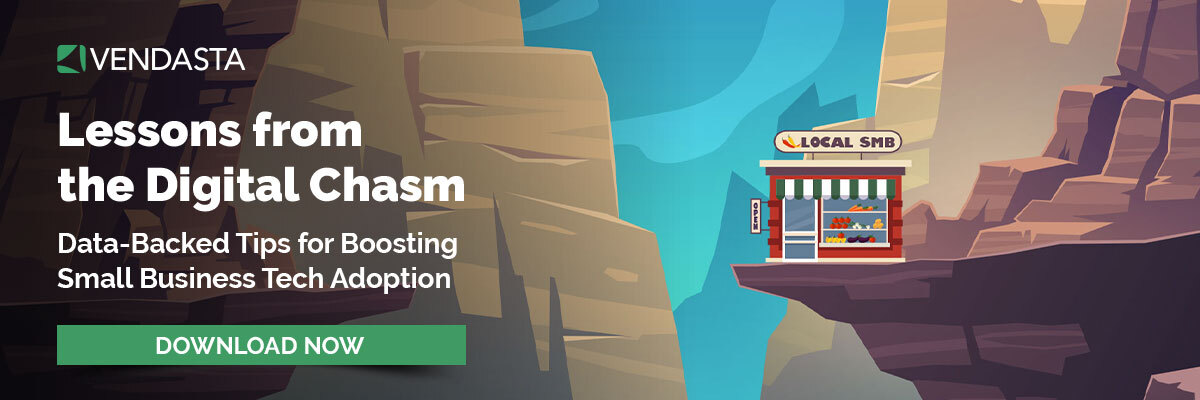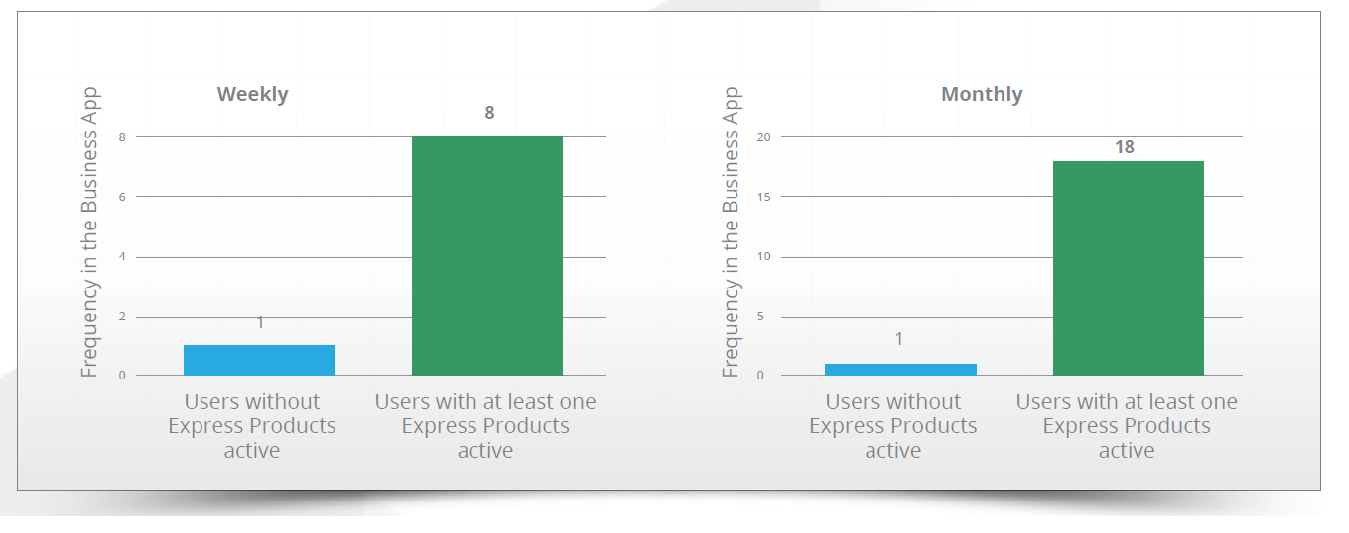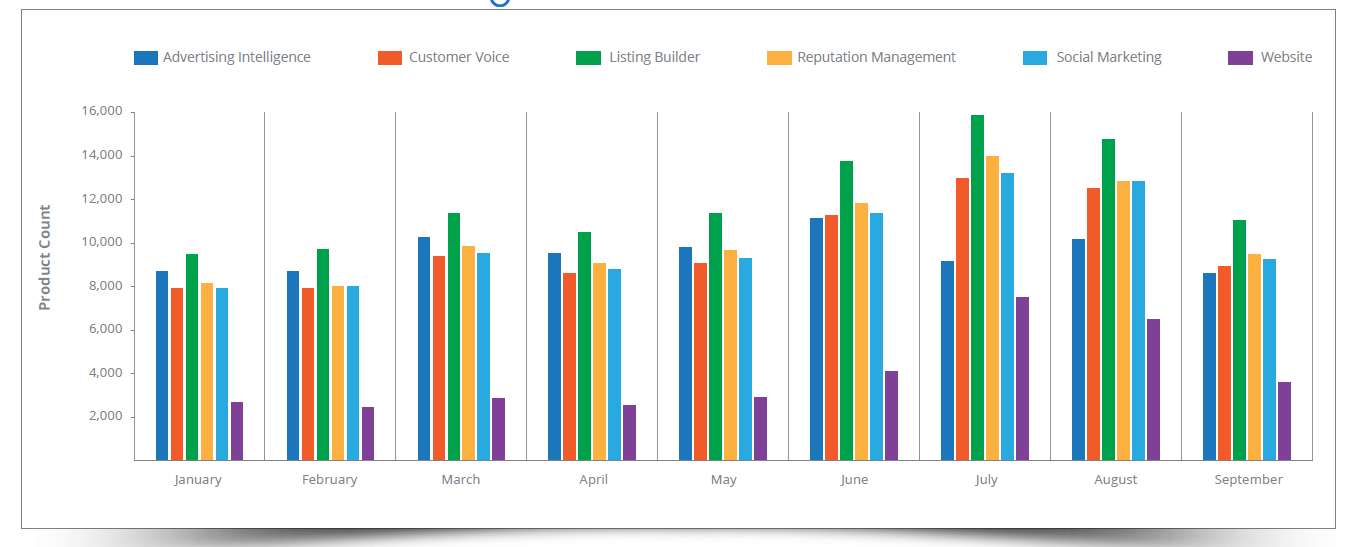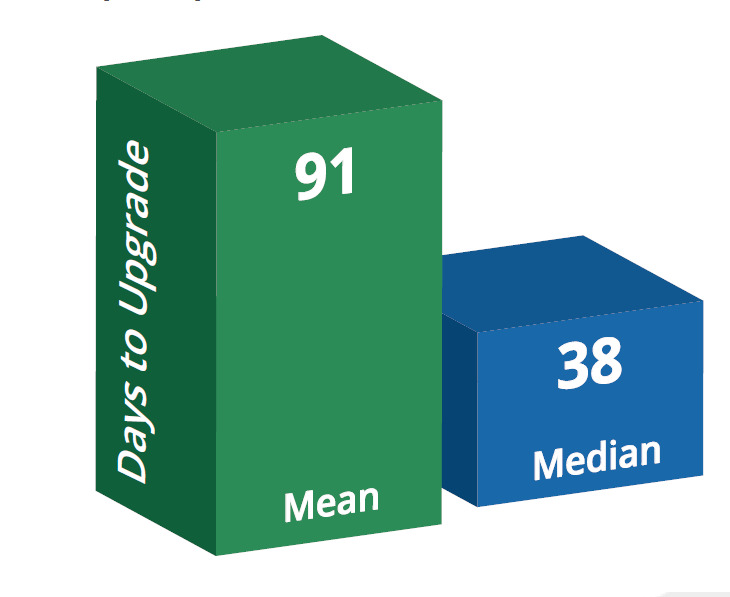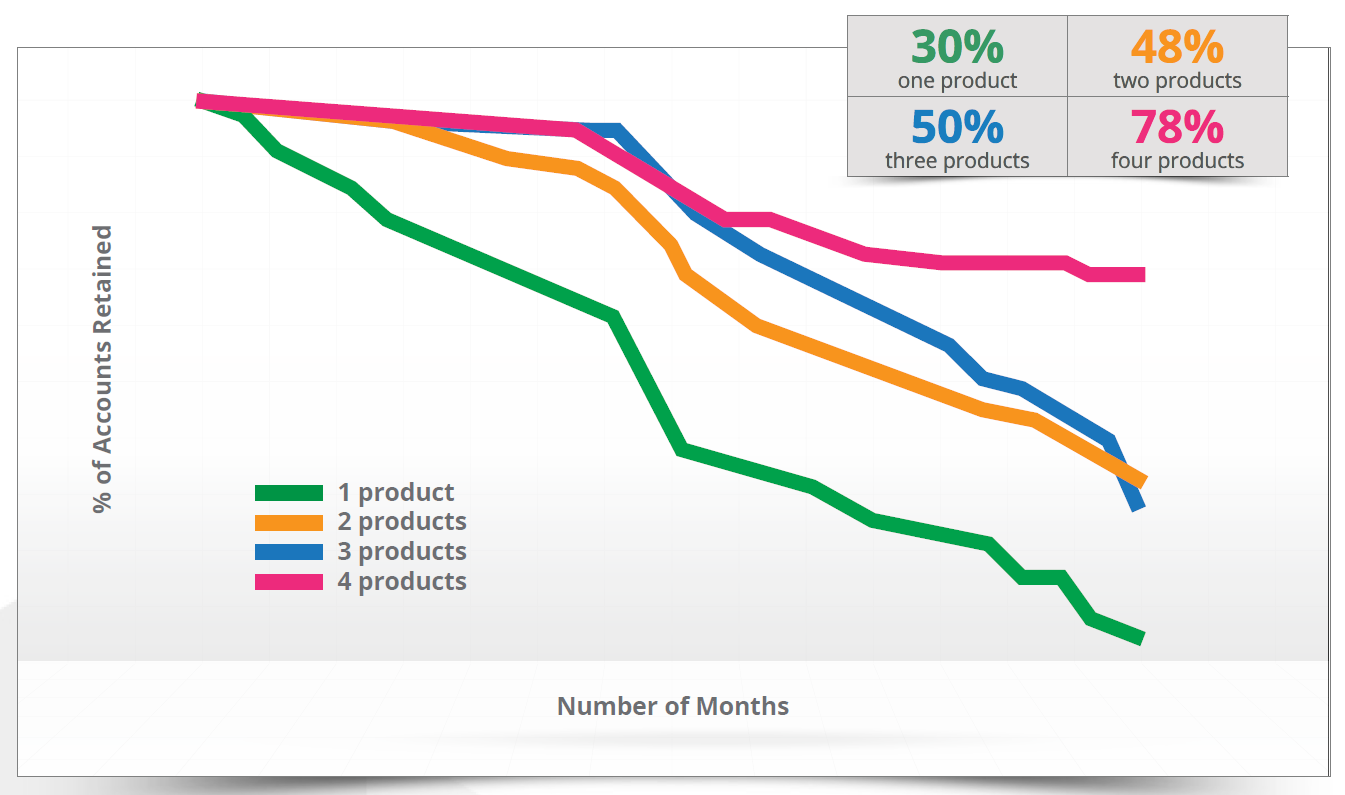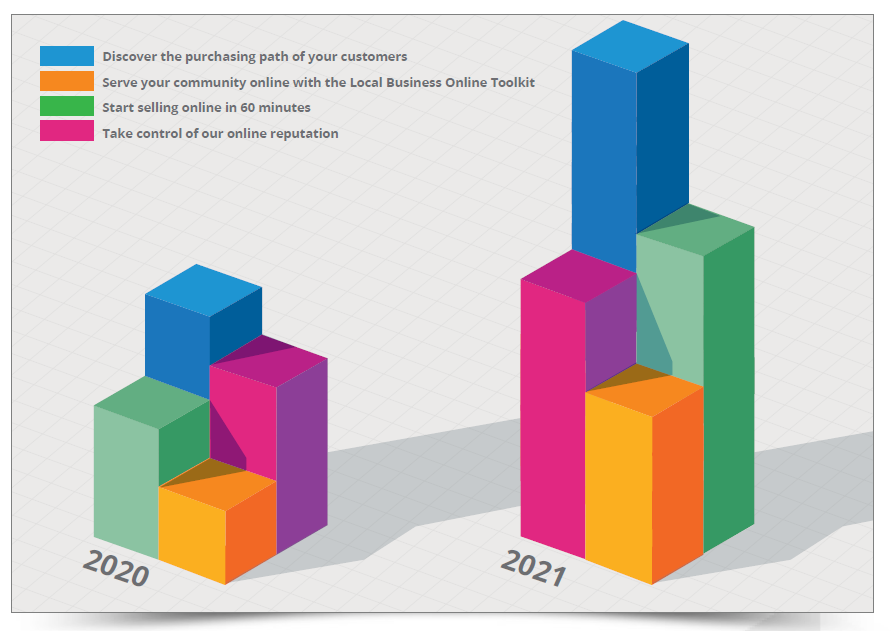Hurdles to SMB Tech Adoption: Data Backed Tips to Help Small Businesses Go Digital
This Vendasta report dives into analysis of users on the Vendasta platform to understand small and medium business activity patterns, preferences, and needs in their digital journey.
Despite the technological advancements, there remain several hurdles for SMBs in their digital journey. A policy guide from the Organisation for Economic Cooperation and Development (OECD) finds that the digital chasm between smaller local businesses (with 10-49 employees) and larger ones has grown over the past decade. That chasm is affecting our local economies. The report notes that digitization “is an important driver of productivity growth, and in turn wage growth, [contributing] to increased inequalities among people, places and firms.”
At Vendasta, our core purpose has always been to drive local economies. Vendasta serves more than 60,000 channel partners, who in turn have more than 5.5 million SMB users. As an all-in-one platform for companies that provide digital solutions to SMBs, we have observed small businesses struggle with similar challenges, especially financial and skill-related.
That’s why when the pandemic struck, Vendasta launched the free Local Business Online Toolkit to help SMBs tide over the tough times and offered several other initiatives to enable and equip them in using these tools. In addition to the Conquer Local Academy courses for our partners, several self-help courses were also launched on the Vendasta Business App, specifically tailored for small businesses.
On the infrastructure side, even though OECD specifically flags the availability of high-speed broadband as an area of concern, we know even beyond internet connectivity, there are other digital infrastructure challenges such as the clutter of multiple logins, subscription invoices, and user interfaces that bog SMBs down.
A year down the line, we wanted to understand how much of a difference our initiatives made. And how removing some of those critical challenges underlined by OECD helped small businesses take to digital in the long run.
This report serves as a data-based, tactical guide for helping marketing agencies and other Vendasta partners understand SMB prospects, and enable their clients to adopt digital tools and succeed. With it, we aim to help our partners win new business so that we can keep our local economies vibrant.
The hypotheses
We based our approach on three primary hypotheses aligned to the challenges pointed out by the OECD.
1. Financial Challenge
Our hypothesis: Once the entry-level finance barrier is removed, SMBs are open to using digital tools. As they engage more and find value, they ultimately make buying decisions. So, when an SMB receives free digital tools, they are more likely to:
- Engage more frequently
- Engage for longer
- Purchase more
- Be retained by a channel partner
2. Infrastructure Challenge
Our hypothesis: SMBs are faced with the clutter of multiple logins, subscription invoices, and user interfaces. The more tools and services an SMB receives through a single expert and operating system, the more likely that expert will retain them.
For the study, our hypothesis was based on how the number of products available in a business operating system for an SMB impacts retention.
3. Internal Skills Challenge
Our hypothesis: Providing self-guided learning to SMBs captures their attention and ultimately leads to higher retention.
So, when an SMB receives helpful training, they are more likely to:
- Engage more frequently
- Engage for longer
- Be retained longer
The results
Challenge 1: Financial
Our first hypothesis is once the entry-level finance barrier is removed, SMBs are open to using digital tools. As they engage more and find value, they ultimately make buying decisions.
What we found: When an SMB receives the freemium Express Products, they are likely to engage more frequently.
For this purpose, we divided the users into two cohorts:
- Users without any Express Products active on their Business App.
- Users with at least one Express Product active on their Business App.
The above analysis shows that users with Express Products are, on average, eight times more likely to be active on the Vendasta Business App on a weekly basis than users without Express Products. Monthly, this jumps to 18 times.
But why the difference in behavior?
Users spend time understanding a free product they just discovered. Over time, if they find value, they tend to engage more.
Conclusion: Users with Express Products show increased engagement that grows over time.
Once we found that SMBs were more active on the Business App, we dug deeper into what kind of products they were interested in using. This gives us an idea about the digital solutions they are looking for.
Listing Builder, Advertising Intelligence, and Reputation Management tools emerged as the top choice of products for SMBs from January through September 2021.
Conclusion: Once they have access to various tools, users are focused on increasing awareness around their brands, knowing the effectiveness of their advertising efforts, and staying on top of their brand image with reputation management.
Our next step was to analyze how long it took users on free products to upgrade to a paid version. For this, we analyze the usage pattern of the cohort with free Express Products.
The analysis shows on average it takes 91 days for a business with active Express Products to switch to a paid version. In the median term, this was 38 days. This analysis underlines that vendors should wait for an optimal time for SMBs to get used to a free product before approaching them to close a sale.
Challenge 2: Infrastructure
SMBs are overwhelmed with the digital clutter of multiple logins, subscription invoices, and user interfaces. In the study, we dove into the number of products activated by SMBs in the Vendasta Business App and tracked how long our partners retained them.
What we found: SMBs with multiple products and services under a single operating system were retained longer by our partners. An analysis of the number of SMBs with the number of products they purchased shows that those with more products are more likely to stay with a vendor longer.
As we can see from the above graph, the larger the basket size of products, the higher the chance of retention.
A service provider stands to gain most — retain 78 percent of clients — if they offer four products. Further, if an SMB purchases only one product, selling that company just one more product increases the retention rate by nearly 20 percent.
But why?
Digital tools often function best in conjunction with others rather than in isolation, thus bringing in more value. A stack of products solves more problems and drives productivity, convincing clients to make more purchases.
Conclusion: Offering more products to SMBs removes entry-level barriers, increasing the chances of retention. Adding free products to this portfolio increases that likelihood.
Read the full study, Why Your Clients Churn, to understand how product ‘basket size’ can help you drive more successful client relationships
Challenge 3: Internal Skills
Our third hypothesis was that since SMBs lack internal skills to identify and use digital solutions, equipping them with easy learning solutions leads to greater sales and higher retention.
For this purpose, we analyzed the top courses offered by the Vendasta Digital Academy on the Business App. These include:
- Discover the Purchasing Path of Your Customers
- Serve Your Community Online with the Local Business Online Toolkit
- Start Selling Online in 60 Minutes
- Take Control of Your Online Reputation
What we found:
The course completion rate was observed to be far higher in 2021 than in 2020. There was an encouraging growth of 160 percent, owing primarily to the sheer need for SMBs to become digitally savvy as demanded by the market conditions following the pandemic.
To understand what kind of courses SMBs were interested in, a year-on-year analysis of the trends throws up some interesting trends.
The fact that the course ‘Discover the Purchasing Path of Your Customers’ came far ahead of others was again driven by the need for SMBs to understand their customers to make appropriate business decisions in a changing market. ‘Start Selling Online in 60 Minutes’ also grew in popularity over the last year, as ecommerce became a necessity for small businesses, overtaking the course ‘Take Control of Your Online Reputation.’
All the trends are healthy and encouraging and very much aligns with the market trends and directions. They also point to the changing mindset among SMBs who are willing to learn new skills.
We also found, users who took these self-learning courses:
- Engaged more frequently online
- Engaged longer with the tools
- Made more purchases
Conclusion: SMBs are eager to learn and upskill if they have access to the self-learning material on the right platform, leading to greater engagement and ultimately greater retention.
To get further details and learn more, download the report Lessons from the Digital Chasm: Data-Backed Tips for Boosting Small Business Tech Adoption


